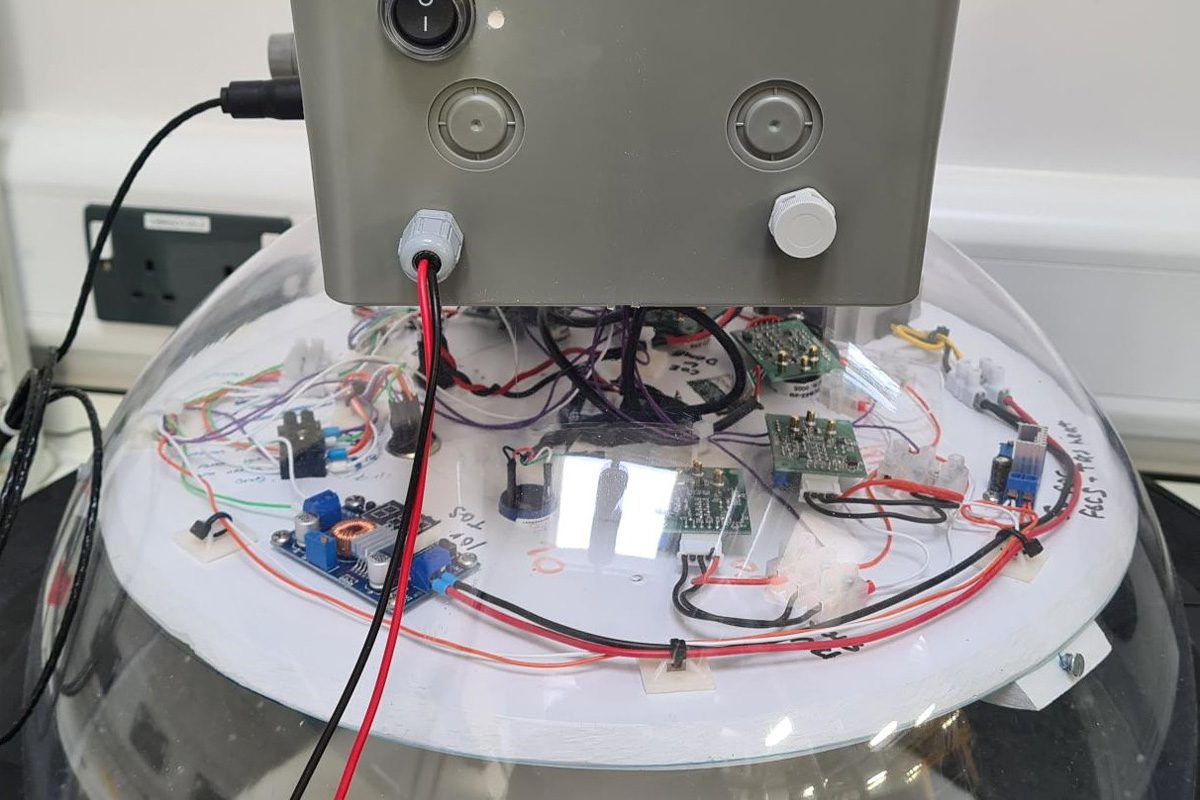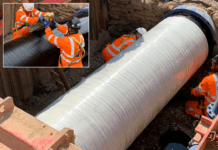
A better understanding of fluxes of climate-relevant gases is required to inform climate change studies and enable better management of ecosystems to mitigate their climate impact. Dr Vas Kitidis, Ian Brown and Jani Pewter of Plymouth Marine Laboratory have come up with an ingenious means of measuring gas fluxes between ground, water surfaces and sea ice and the atmosphere.
The clever design contains a gas-tight space, sits on top of any surface (water, mud, ice, etc) and floats with rising and ebbing tides.
The whole system fits inside and above a Velda floating fish dome, a large convex transparent plastic dome surrounded by a buoyant collar, typically used to magnify pondlife for viewing purposes. An array of semiconductor, electrochemical and NDIR gas sensors are mounted within a large disc which is seated inside the top half of the dome to monitor levels of the following gases and vapours: hydrogen, organic solvents, carbon monoxide, nitric oxide, nitrogen dioxide, ammonia, hydrogen sulphide, oxygen, carbon dioxide and oxygen. Temperature, pressure and humidity are also measured within the dome and ambient CO2 levels outside. All the sensors are connected via various interfaces to a Raspberry Pi, the brain of the whole operation which is housed inside a weatherproof enclosure mounted on top of the dome. Three sealed lead-acid batteries power the system, which includes a small blower to periodically flush the dome with fresh air, throughout a full tidal cycle. The whole system runs autonomously, sampling at 1Hz, and logging the data. Real-time wireless monitoring may be added in the future.
The system currently being built will be used in a wetland creation scheme in the River Tamar, and then hopefully on ice in the Weddell sea from the RRS Sir David Attenborough, the new UK polar research ship
For more information on the Figaro Gas Sensors used for this project please contact Omni Sensors and Transmitters: sensorsandtransmitters.com







